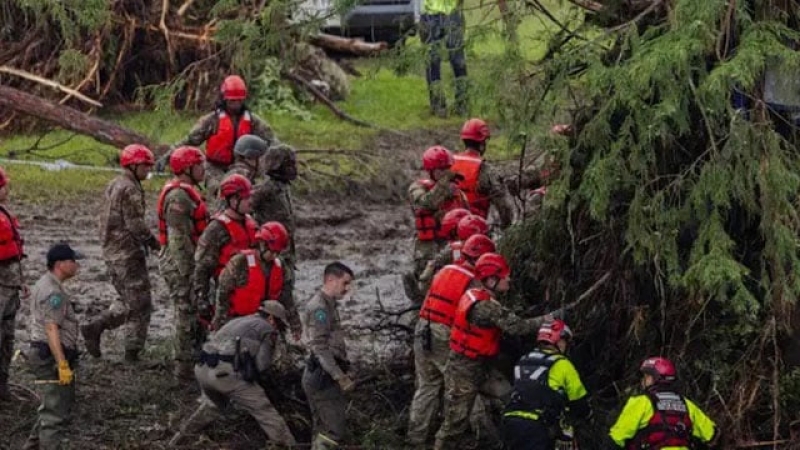- Security Council Divided on United States' Venezuela Action |
- Over 1.53m voters register for postal balloting: Shafiqul Alam |
- Bangladesh Bank to liquidate 9 NBFIs in financial sector reforms |
- Govt Moves to Clear Tk20,000cr Dues to Avoid Summer Outages |
- Maduro Pleads Not Guilty in US Court, Claims Presidency |
Over 160 Missing as Deadly Texas Flood Toll Hits 109

More than 160 people remain missing following devastating flash floods in Texas that have already claimed at least 109 lives, state authorities confirmed on Tuesday.
Four days after torrents of water swept through several counties—many hit during the early hours of the Fourth of July holiday—hopes of finding survivors are dwindling. Governor Greg Abbott said the number of missing could still rise as the search continues
"In Kerr County alone, 161 people have been reported missing by friends, relatives, and neighbours," Abbott said. "That number may grow."
Kerr County, part of central Texas's flood-prone "Flash Flood Alley," bore the brunt of the disaster, reporting at least 94 deaths. Among them were 27 girls and counselors at a youth summer camp on the Guadalupe River. Floodwaters surged through the camp overnight, sweeping away cabins as hundreds slept.
As of Tuesday evening, five campers, one counselor, and another child not affiliated with the camp remained missing.
“There’s nothing more important in our hearts and minds than the people of this community—especially those who are still lost,” the governor said.
At least 15 additional deaths have been confirmed in other parts of the state.
Search and recovery operations are ongoing, but conditions are proving extremely challenging. Officials said helicopters, drones, and trained dogs are being deployed, but large piles of debris and deep mud continue to hamper access.
“It’s treacherous, time-consuming, and dangerous,” said one official involved in the rescue effort. “The water is still there, and we have to navigate through very obstructive terrain.”
Meanwhile, in neighboring New Mexico, the US National Weather Service declared a flash flood emergency in the town of Ruidoso. Sudden floodwaters trapped several residents, and the Rio Ruidoso reportedly crested at over 20 feet (six metres), causing widespread damage to homes.
Back in Texas, the town of Hunt—considered the epicentre of the disaster—is seeing large-scale recovery operations. Residents like 24-year-old Javier Torres are taking matters into their own hands. Torres, searching for his missing grandmother, had already found the bodies of his grandfather and two children believed to have been swept away by the river.
Officials have warned that more heavy rain is expected, but reassured that the weather will not halt ongoing rescue and recovery efforts.
President Donald Trump is expected to visit the disaster zone on Friday, accompanied by the First Lady. He noted the deployment of emergency helicopters and praised the rescue personnel for saving many lives.
However, growing concerns have been raised about the adequacy of early warning systems and the effectiveness of the emergency response. Some questioned whether recent federal funding cuts may have affected preparedness.
When asked about the timing and speed of the response, officials declined to comment, saying only that their focus remains on recovering the missing.
Experts say a combination of extreme drought and rapid rainfall contributed to the disaster. Dry, compacted soil in the region was unable to absorb the intense downpour, leading to massive runoff and flooding.
“This part of Texas had been experiencing exceptional drought,” explained one weather analyst. “Since May, temperatures have been above average, intensifying the impact.”
Others pointed to long-standing staffing shortages at key agencies, saying that experienced personnel are irreplaceable in high-pressure situations.
The full scale of the disaster is still unfolding, with communities grieving, rescuers working around the clock, and the hope of finding survivors fading.

